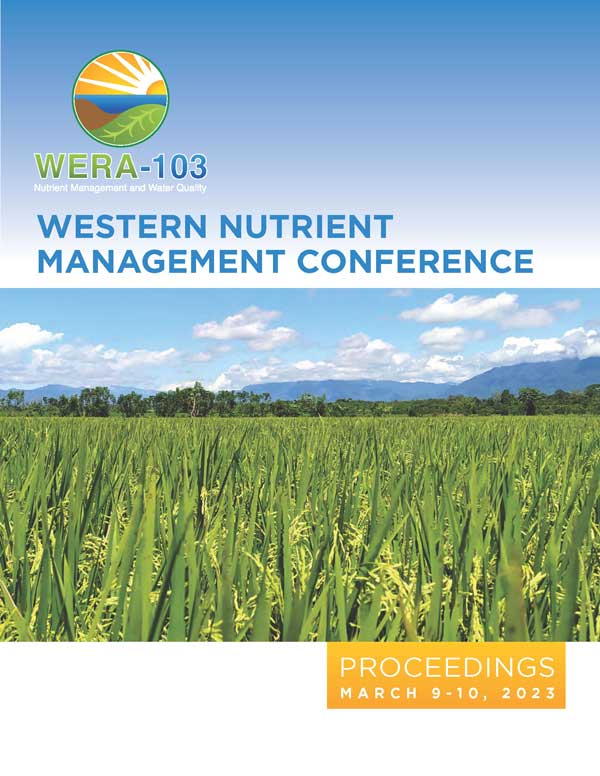Download the Conference Proceedings
Proceedings
Authors
| Filter results5 paper(s) found. |
|---|
1. Wastewater Reuse in the Arid West: Increased Water Supplies and New Paradigms for Nutrient ManagementIrrigated agriculture in the western United States is one of the most productive systems in the world. However, in recent years the security of water supplies for agriculture have come into question. Currently states that use Colorado Riverwater are in the process of formalizing drought contingency plans to prevent reservoirs along the Colorado River from going dry. Competition for water with the agricultural sector include both urban and environmental uses. Treated municipal effluent... C. Williams |
2. Nitrous Oxide Emissions: Assessment and Mitigation in Irrigated Cotton in the Western USANitrogen from fertilizers is a major source of the potent greenhouse gas nitrous oxide (N2O) in irrigated cropping systems. To date, N2O emission data is scarce for row crops in the Western USA, especially, the desert southwest, where seasonal irrigation quantities can exceed 40 inches. The objective of these studies was to assess the effect of N fertilizer management on N2O emissions from furrow-, overhead sprinkler-, and subsurface drip-irrigated (SDI) cotton (Gossypium hirsutum L.) in... K. Bronson, D. Hunsaker, K. Thorp, C. Williams |
3. Inhibitors, Method and Time of Nitrogen Application for Improved Winter Wheat Production in Central MontanaThe contribution of nitrogen (N) fertilizer to boost yield and improve quality is unquestionable. Inefficient use of applied N is economically significant and environmentally unsafe. Ammonia loss can exceed 40% of applied N. Nitrogen leaching is polluting wells. Use of urease and nitrification inhibitors along with appropriate timing and method of nitrogen application can reduce nitrogen loss, improve yield and quality of wheat. This experiment investigated the effect of timing and method of N... Y. Mohammed, T. Jensen, J. Heser, C. Chen |
4. Measured and Predicted Temporal Changes in Soil Nitrate-n Levels from Late Summer to Early Spring in MontanaMost soil sampling is conducted from August to November in Montana because of better soil sampling conditions and because it provides more time for growers to make fertilizer decisions prior to application. Fertilizer guidelines in Montana are based on spring nitrate-N levels in the upper 2 ft because they are more indicative of growing season available N than fall nitrate-N levels. It is not known how much nitrate-N levels change between late summer and spring, nor is it known what factors affect... C. Jones, A. Lenssen, C. Chen, K. Mcvay, B. Stougaard, M. Westcott, J. Eckhoff, J. Weeding, M. Greenwood |
5. Tillage Effects on Phosphorus AvailabilityVertical stratification of phosphorus (P) has been documented in both no-till and reduced tillage systems, yet very few studies have determined if this stratification has affected P uptake, and none of these studies have been conducted in Montana. Stratification of P was compared in 1.2 in layers in a small plot study composed of four tillage systems: long-term conventional (sweep) till (CT), 10-yr no-till (NT), 1-yr NT and 1-yr CT. Olsen P was measured in the upper 12 in., and a sequential extraction... C. Jones, K. Neill, C. Chen, E. Allison |
